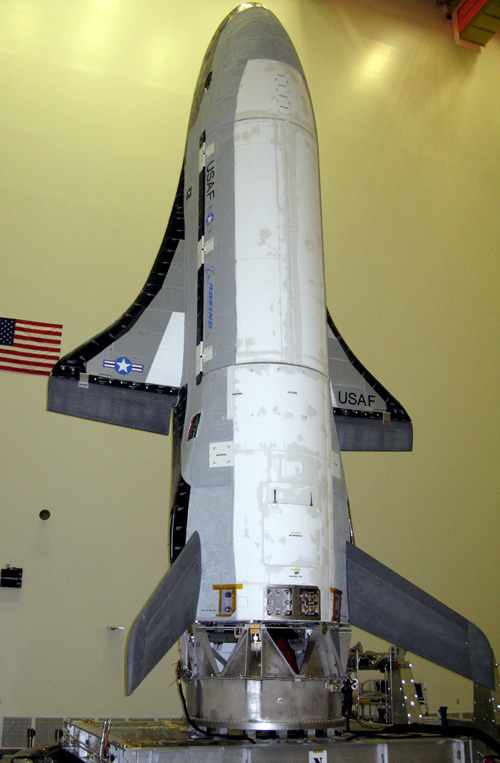VANDENBERG AIR FORCE BASE, Calif. — The U.S. Air Force’s secrecy-shrouded X-37B unmanned spaceplane returned to Earth early today after more than seven months in orbit on a classified mission, officials said.
The winged craft autonomously landed at Vandenberg Air Force Base on the California coast 130 miles northwest of Los Angeles, base spokesman Jeremy Eggers said.
“It’s very exciting,” Eggers said of the early-afternoon landing.
The X-37B was launched by an Atlas 5 rocket from Cape Canaveral, Fla., on April 22, 2010, with a maximum mission duration of 270 days.
Also known as the Orbital Test Vehicle, the Boeing-built spacecraft was originally a NASA project before being taken over by the military.
The Air Force has not said whether it carried anything in its cargo bay, but insists the primary purpose of the mission was to test the craft itself.
“We are very pleased that the program completed all the on-orbit objectives for the first mission,” program manager Lt. Col. Troy Giese said in a statement.
“Today’s landing culminates a successful mission based on close teamwork between the 30th Space Wing, Boeing and the Air Force Rapid Capabilities Office,” Giese said.
The Air Force said it planned to launch a second X-37B, dubbed OTV-2, in spring 2011.
Officials have made public only a general description of the mission objectives: testing of guidance, navigation, control, thermal protection and autonomous operation in orbit, re-entry and landing.
However, the ultimate purpose of the X-37B and details about the craft have long remained a mystery, though experts said the spacecraft was intended to speed up development of combat-support systems and weapons systems.
The voyage culminated the project’s long and expensive journey from NASA to the Pentagon’s research and development arm and then on to the secretive Air Force Rapid Capabilities Office. Hundreds of millions of dollars have been spent on the X-37 program, but the current total hasn’t been released.
While the massive space shuttles have been likened to cargo-hauling trucks, the X-37B is more like a sports car, with the equivalent trunk capacity.
Built by Boeing Co.’s Phantom Works, the 11,000-pound craft is just over 29 feet long, with a wingspan of less than 15 feet. It has two angled tail fins rather than a single vertical stabilizer.
Unlike the shuttle, it was designed for launch like a satellite, housed in a fairing atop the expendable Atlas V rocket, and capable of deploying solar panels to provide electrical power in orbit.
Send questions/comments to the editors.



Success. Please wait for the page to reload. If the page does not reload within 5 seconds, please refresh the page.
Enter your email and password to access comments.
Hi, to comment on stories you must . This profile is in addition to your subscription and website login.
Already have a commenting profile? .
Invalid username/password.
Please check your email to confirm and complete your registration.
Only subscribers are eligible to post comments. Please subscribe or login first for digital access. Here’s why.
Use the form below to reset your password. When you've submitted your account email, we will send an email with a reset code.